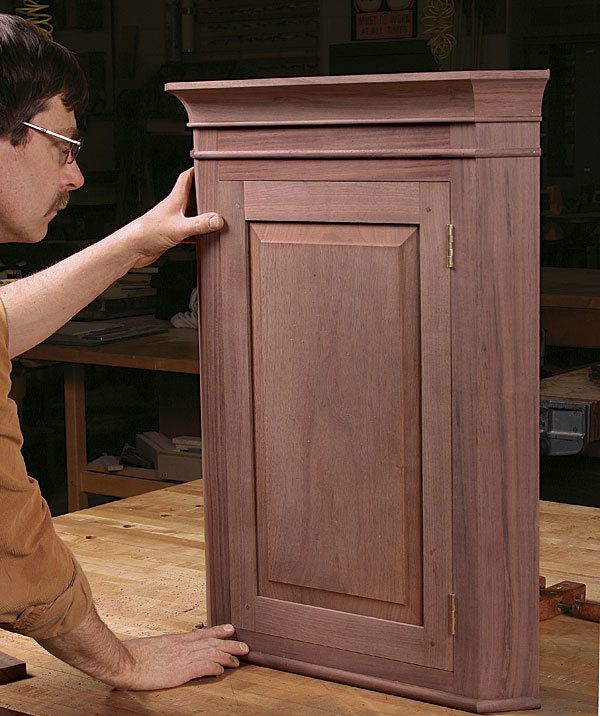How to Fit an Inset Door
Systematic approach yields perfect results every time
Synopsis: Learn a foolproof approach to fitting an inset door. All you need is basic handplaning skills and this step-by-step method. This is a companion article to Steve Latta’s “Flawless Hinges in Fine Furniture” in the same issue. The trick is to build the door a bit oversize and then fit it systematically, one edge at a time. You’ll end up with even gaps all around.
It is painful to see a student labor over a beautiful frameand-panel door only to have it all go wrong when fitting it to the opening. Trim off too much, or trim it unevenly, and there are unsightly gaps all around.
If I catch the student in time, I demonstrate my foolproof approach to fitting an inset door. With basic skills, anyone can get a perfect-looking door every time. The trick is to build the door oversize and then fit it systematically, one edge at a time.
Before I build the door, I measure the width of the opening. Then I make the door 1⁄8 in. bigger in all directions (1⁄4 in. overall). If the door is not square, or a rail is not quite flush with a stile along the outside edge, having a little extra makes these problems not so problematic.
It helps if the cabinet is resting plumb and level before you start the fitting process, so you are sure it isn’t racked one way or the other. The easiest way to do this is to level up your bench and work off of it. Also, if the cabinet has a back that is intended to help square it up, go ahead and put it in.
Start by trimming the hinge stile
When I fit doors, I aim for a heavy 1⁄32-in. gap all around. To get there, I trim the edges one by one, in a specific sequence. After trimming each edge, I remove the sawmarks with a handplane or sanding block, taking off as little as possible.
With a door that’s oversize by 1⁄8 in. all around, begin by taking a light 1⁄8 in. off the hinge stile—don’t worry, you still have the amount of the gap to take off. The goal is to take about half of the excess off the hinge stile, and half of it off the opposite edge, called the striker stile. That way the two will end up looking even.
Fit the bottom and top edges
Now move to the bottom of the door. Using a crosscut sled on the tablesaw, trim a light 1⁄8 in. off the bottom to clean up the edge. Again, the goal is to end up trimming close to the same amount off opposite edges of the door. If the slot through the base of your sled does not hug the blade closely, tack down a piece of 1⁄4-in.-thick MDF on the base and clamp a strip of 3⁄4-in.-thick MDF along the back. Then run the sled through the blade again to get nice zero-clearance slots in these fresh surfaces. These slots reduce tearout and also eliminate the guesswork as to where the cut will actually be.
For the full article, download the PDF below:
Fine Woodworking Recommended Products

Starrett 12-in. combination square

Bessey K-Body Parallel-Jaw Clamp

Estwing Dead-Blow Mallet























Comments
This was helpful to me as I just took my first run at inset doors. Thanks.
Log in or create an account to post a comment.
Sign up Log in